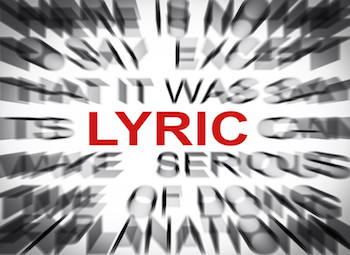 Discover the 11 secrets that pro songwriters have known for decades. “The Essential Secrets of Songwriting” eBook Bundles are being used by thousands of songwriters to take their music to a new level of excellence. Read more…
Discover the 11 secrets that pro songwriters have known for decades. “The Essential Secrets of Songwriting” eBook Bundles are being used by thousands of songwriters to take their music to a new level of excellence. Read more…
______________
 There are many ways to start the songwriting process, and you’ll find that whichever element of the song you start with — chord progression, melody, lyric, etc. — is the one that will often be its most important and engaging component. Songs that you start by working out the lyric first will often highlight the lyric as its most appealing part.
There are many ways to start the songwriting process, and you’ll find that whichever element of the song you start with — chord progression, melody, lyric, etc. — is the one that will often be its most important and engaging component. Songs that you start by working out the lyric first will often highlight the lyric as its most appealing part.
If you’ve got a lyric, creating a melody for it and adding chords to that melody requires you to become as familiar with the many ways to say your lyric as a first step.
Check out the following set of steps for turning a song lyric into a melody:
- Be sure you’ve got the lyric right. Good lyrics should “flow off the tongue”, using common, everyday words. Speak your lyric over and over; it should be easy to read, and should sound like someone could say those words naturally.
- Find the natural pulse and rhythm. There’s a natural rhythm in how we say English words. Some syllables are naturally longer than others. For example, say the word “open” several times, and notice that the “o” syllable can be elongated considerably. But elongating the “-pen” syllable sounds forced and unnatural. So speak your lyric, and become familiar with every word’s natural pulse.
- Find the natural pitch. English isn’t a tonal language, but it is certainly a language that makes use of higher and lower sounds. Using the word “open” again, notice that the “o” syllable is spoken at a higher pitch than the “-pen” syllable. But try to say the “o” syllable lower in pitch and it sounds unnatural and forced. You’re starting to find the melodic component of your lyric.
- Speak your lyric melodramatically. Say each line, allowing your voice to move up and down in an almost exaggerated way. You’re not ultimately going to sing it this way, of course, but it will help you identify the basic direction of the inherent melody.
Now to create the melody. Here are some tips that can guide you:
- If you’ve identified that part of your lyric is the chorus, you may want to start there. Getting a good chorus melody can help make the rest of the song a bit easier.
- Try playing a few chords over and over, and speak the first line of your lyric, allowing your voice to move up and down as the natural pitch dictates.
- Don’t get locked into those few chords. At some point, early on, you need to expand your musical landscape by building longer progressions (especially for the verse), and create a more interesting melody.
- Turn the ups and downs of your reading into actual pitches. Remember that repetition of melodic cells (short 3- or 4-note ideas) is common in melody-writing, so try the same short melodic ideas using different lines of lyric.
- Remember that memorable melodies have a good deal of contour — an engaging shape — that helps them to be easily remembered.
- The toughest part is starting your melody. Once the initial melodic ideas start to come together, you’ll find that other bits of melody become easier.
When you’re done, sing your melody to yourself, and be sure that every word is placed in such a way that its natural pitch, rhythm and pulse are honoured.
______________
 Written by Gary Ewer. Follow on Twitter.
Written by Gary Ewer. Follow on Twitter.
“The Essential Secrets of Songwriting” eBook Bundle packages look at songwriting from every angle, and have been used by thousands of songwriters. How to use chords, write melodies, and craft winning lyrics. GET TODAY’S DEAL










Excellent article fro Gary Ewer , of course we can also write compelling
lyrics to and interesting chord sequence, YESTERDAY from
Paul Mac Cartney was a melody he dreamed , George Martin the Beatles
producer assured Paul that the melody was not stolen.
A few years down the line Paul wrote the lyrics of Yesterday, some would
say the lyrics are cliche , but if we consider this was written over fifty years
ago that can be excused , and at one time the song was the most recorded
song of all time. Lyrics first can be a problem especially during a
web site collaboration, as many lyric writers write words with no idea of meter
and it’s many variants.